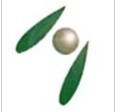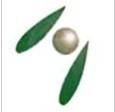
propionic acid
Product Details:
Product Description
Propionic acid Basic information
Product Name: Propionic acid
Synonyms: RARECHEM AL BO 0158;PROPRIONIC ACID;PROPIONATE ION CHROMATOGRAPHY STANDARD;PROPIONIC ACID;PROPANOIC ACID;PROPANYL ACID;TRIANOIC ACID;Acide propionique
CAS: 79-09-4
MF: C3H6O2
MW: 74.08
EINECS: 201-176-3
Product Categories: Alkylcarboxylic Acids;Monofunctional & alpha,omega-Bifunctional Alkanes;Monofunctional Alkanes
Mol File: 79-09-4.mol
Propionic acid Chemical Properties
mp ?24-?23 °C(lit.)
bp 141 °C(lit.)
density 0.993 g/mL at 25 °C(lit.)
vapor density 2.55 (vs air)
vapor pressure 2.4 mm Hg ( 20 °C)
refractive index n20/D 1.386(lit.)
FEMA 2924
Fp 125 °F
storage temp. 0-6°C
Water Solubility 37 g/100 mL
Merck 14,7825
BRN 506071
Stability: Stable. Incompatible with strong oxidizing agents. Flammable.
CAS DataBase Reference 79-09-4(CAS DataBase Reference)
NIST Chemistry Reference Propanoic acid(79-09-4)
EPA Substance Registry System Propanoic acid(79-09-4)
Safety Information
Hazard Codes C
Risk Statements 36/37/38-34
Safety Statements 26-36-45-23
RIDADR UN 3463 8/PG 2
WGK Germany 1
RTECS UE5950000
HazardClass 8
PackingGroup II
Hazardous Substances Data 79-09-4(Hazardous Substances Data)
MSDS Information
Provider Language
SigmaAldrich English
ACROS English
ALFA English
Propionic acid Usage And Synthesis
Chemical Properties Clear, colorless liquid
General Description A clear oily aqueous liquid with a pungent rancid odor. Burns skin and the vapors irritate mucous membranes. Corrosive to most metals and tissue. Density 8.3 lb / gal.
Air & Water Reactions Dilution with water causes release of heat.
Reactivity Profile Propionic acid reacts as an acid to neutralize bases in exothermic reactions. Burns when exposed to heat, flame or oxidizers. When heated to decomposition emits acrid smoke and irritating fumes [Lewis, 3rd ed., 1993, p. 1090].
Health Hazard May cause toxic effects if inhaled or ingested/swallowed. Contact with substance may cause severe burns to skin and eyes. Fire will produce irritating, corrosive and/or toxic gases. Vapors may cause dizziness or suffocation. Runoff from fire control or dilution water may cause pollution.
Fire Hazard Flammable/combustible material. May be ignited by heat, sparks or flames. Vapors may form explosive mixtures with air. Vapors may travel to source of ignition and flash back. Most vapors are heavier than air. They will spread along ground and collect in low or confined areas (sewers, basements, tanks). Vapor explosion hazard indoors, outdoors or in sewers. Runoff to sewer may create fire or explosion hazard. Containers may explode when heated. Many liquids are lighter than water.
Propionic acid Preparation Products And Raw materials
Raw materials Oxygen-->CARBON MONOXIDE-->Paraffin wax-->Cupric acetate monohydrate -->Propionaldehyde-->Molasses-->Cobalt naphthenate -->NICKEL CARBONYL-->Manganese naphthenate
Preparation Products Methyl propionate-->Metalaxyl-->3,4-DIAMINOQUINOLINE-->Ethyl propionate-->Ciprofloxacin-->4-AMINO-3-NITROQUINOLINE-->DL-Alanine-->Dimethyl fumarate-->isoindoline-5-carboxylic acid-->Sodium propionate-->Ethyl 2-bromopropionate-->4-Chloro-3-nitroquinoline-->METHYL ISOINDOLINE-5-CARBOXYLATE-->ETHYL 3-PHENYLGLYCIDATE-->2-Bromoanthracene-->3-Chloropropionic acid-->Propanil -->5-BROMOISOINDOLINE-->2-Methylhexanoic acid-->4-bromoisoindoline-->3-Methylquinoline-->2-Chloropropionic acid-->Tiopronin-->6-BROMO-3,4-DIHYDRO-1H-QUINOLIN-2-ONE-->Napropamide-->Ethyl 2-chloropropionate-->SOLVENT YELLOW 85-->DL-2-Bromopropionic -->2-Chloropropionyl chloride-->Calcium dipropionate-->3-NITRO-4-QUINOLINOL-->LINALYL PROPIONATE-->CITRONELLYL PROPIONATE-->PROPIONIC ACID POTASSIUM SALT-->Isobutyl propionate-->TERPINYL PROPIONATE-->BETA-(4-(ACETYLAMIDO)PHENOXY)PROPANOIC ACID-->Methyl 2-chloropropionate-->Diclofop-methyl-->Furfuryl thiopropionate
Other Products in 'Starch Derivatives ' category
 |
A & Z Group Co.,Ltd
All Rights Reserved.(Terms of Use) Developed and Managed by Infocom Network Private Limited. |
 English
English Spanish
Spanish French
French German
German Italian
Italian Chinese (Simplified)
Chinese (Simplified) Japanese
Japanese Korean
Korean Arabic
Arabic Portuguese
Portuguese





 Send Inquiry
Send Inquiry